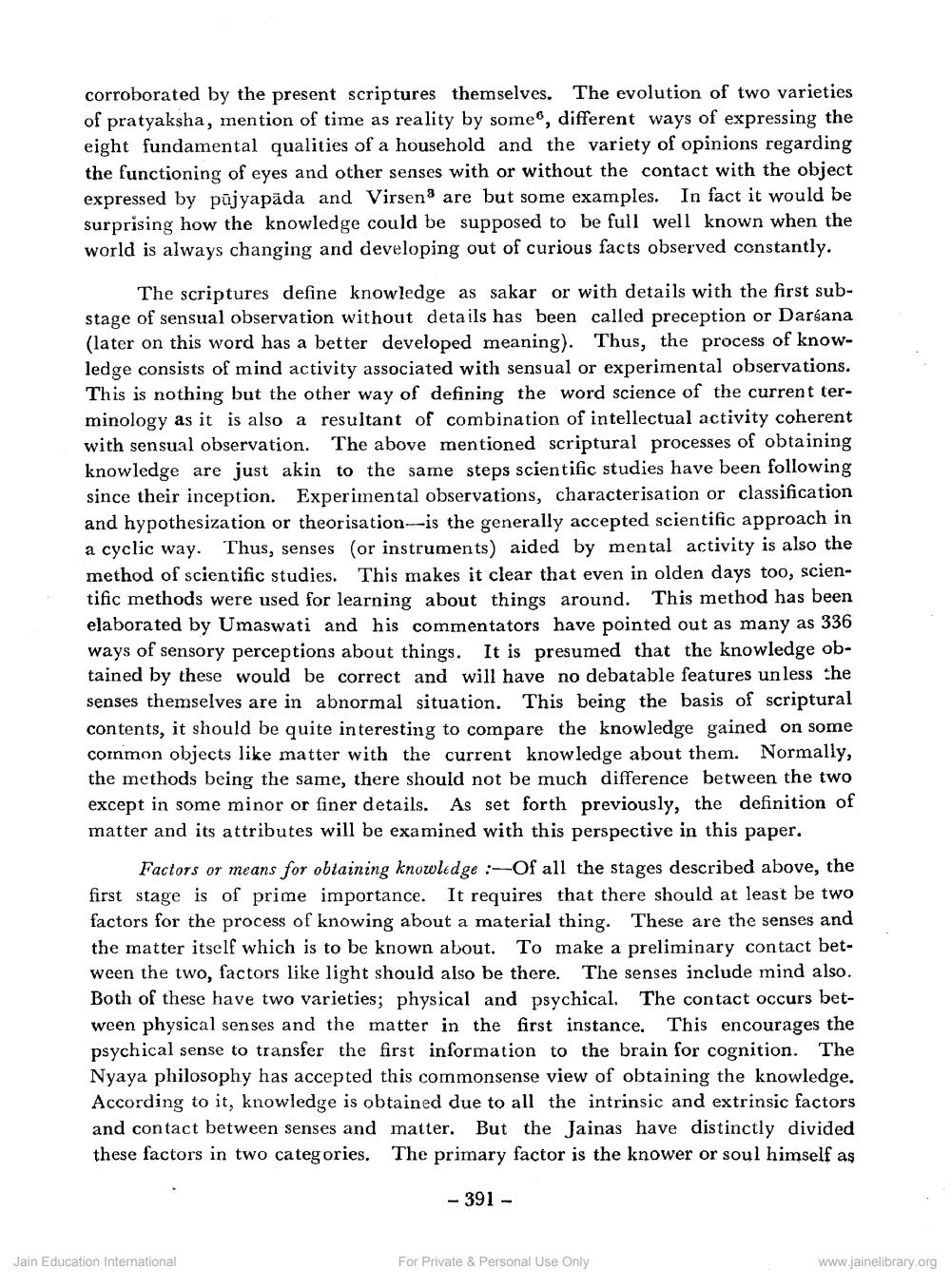Book Title: Property of Matter in Jain Canons Author(s): N L Jain Publisher: Z_Kailashchandra_Shastri_Abhinandan_Granth_012048.pdf View full book textPage 4
________________ corroborated by the present scriptures themselves. The evolution of two varieties of pratyaksha, mention of time as reality by some, different ways of expressing the eight fundamental qualities of a household and the variety of opinions regarding the functioning of eyes and other senses with or without the contact with the object expressed by pūjyapäda and Virsen are but some examples. In fact it would be surprising how the knowledge could be supposed to be full well known when the world is always changing and developing out of curious facts observed constantly. The scriptures define knowledge as sakar or with details with the first substage of sensual observation without details has been called preception or Darsana (later on this word has a better developed meaning). Thus, the process of knowledge consists of mind activity associated with sensual or experimental observations. This is nothing but the other way of defining the word science of the current terminology as it is also a resultant of combination of intellectual activity coherent with sensual observation. The above mentioned scriptural processes of obtaining knowledge are just akin to the same steps scientific studies have been following since their inception. Experimental observations, characterisation or classification and hypothesization or theorisation--is the generally accepted scientific approach in a cyclic way. Thus, senses (or instruments) aided by mental activity is also the method of scientific studies. This makes it clear that even in olden days too, scientific methods were used for learning about things around. This method has been elaborated by Umaswati and his commentators have pointed out as many as 336 ways of sensory perceptions about things. It is presumed that the knowledge obtained by these would be correct and will have no debatable features un less the senses themselves are in abnormal situation. This being the basis of scriptural contents, it should be quite interesting to compare the knowledge gained on some common objects like matter with the current knowledge about them. Normally, the methods being the same, there should not be much difference between the two except in some minor or finer details. As set forth previously, the definition of matter and its attributes will be examined with this perspective in this paper. Factors or means for obtaining knowledge :-Of all the stages described above, the first stage is of prime importance. It requires that there should at least be two factors for the process of knowing about a material thing. These are the senses and the matter itself which is to be known about. To make a preliminary contact between the two, factors like light should also be there. The senses include mind also. Both of these have two varieties; physical and psychical. The contact occurs between physical senses and the matter in the first instance. This encourages the psychical sense to transfer the first information to the brain for cognition. The Nyaya philosophy has accepted this commonsense view of obtaining the knowledge. According to it, knowledge is obtained due to all the intrinsic and extrinsic factors and contact between senses and matter. But the Jainas have distinctly divided these factors in two categories. The primary factor is the knower or soul himself as -391 - Jain Education International For Private & Personal Use Only www.jainelibrary.orgPage Navigation
1 2 3 4 5 6 7 8 9 10 11 12
